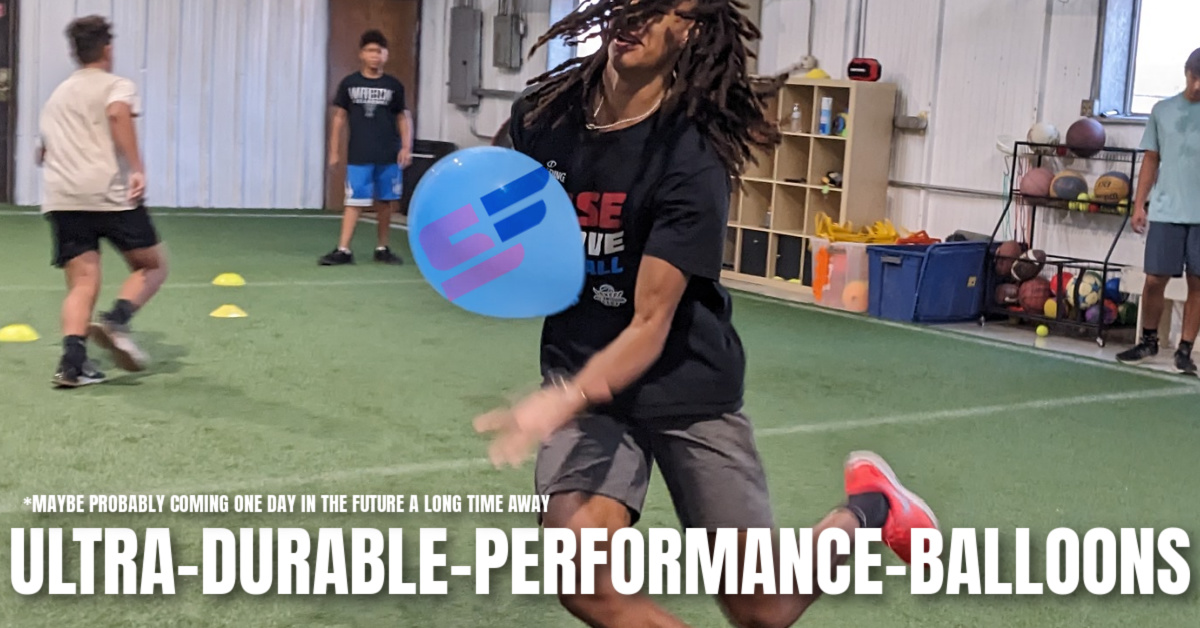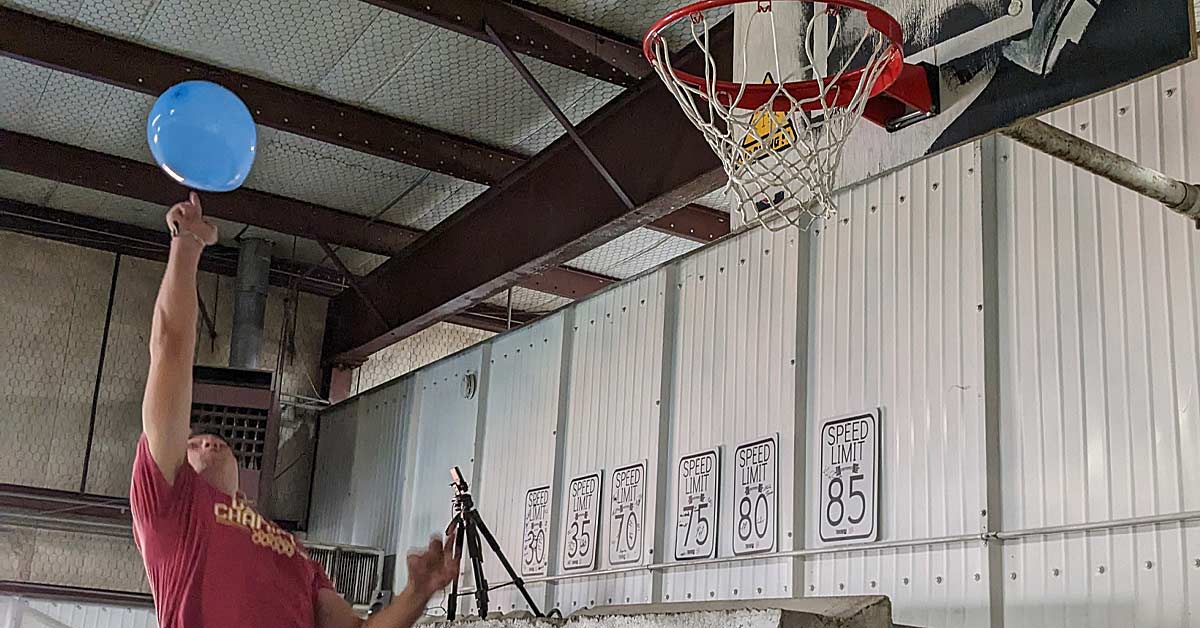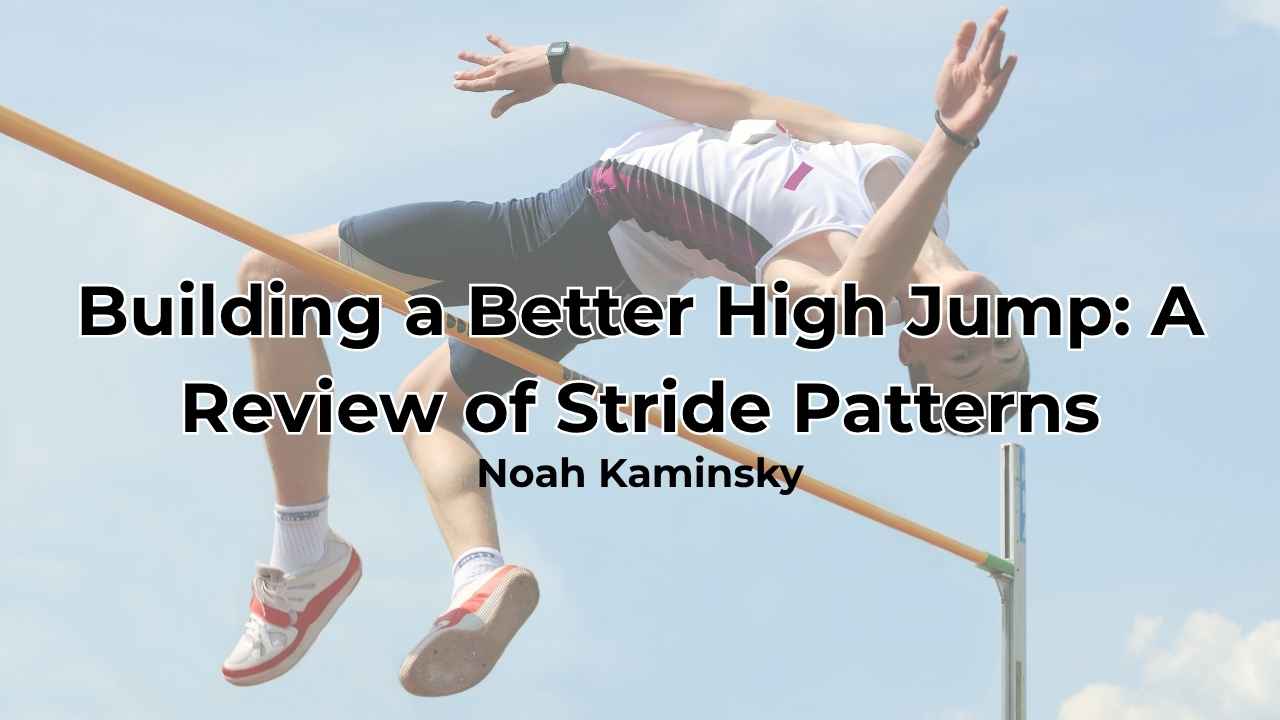The world of strength and conditioning has evolved from chalk being one of the only things needed for a successful session to coaches scrambling to find funds for an iPad at every rack. Money must be fundraised, pulled from couch cushions, and gifted from rich grandmas just for most schools to keep up. And it doesn’t help that the current economy has most schools budgeting so hard that administrators are suggesting going from two-ply down to one (let me be the first to say this is a horrible idea for HS boys).
So, as a coach, you must make sure your money goes where it is most valuable, like performance tracking devices, not gimmicky tools that cost an arm and a leg (and may not work.) We scrounge every penny we can and scour the internet for deals and ideas, but hiding at your local party store, on the third shelf to the left, is a secret weapon coming in whatever color you want and only costing $1 per 25-pack.
Yep—balloons.
The adage “don’t judge a book by its cover” fits perfectly with today’s Game On post—and I promise it’s worth the read.
Put a group of athletes in a room with a balloon, and they will begin hitting it around just for fun. Whether they are 7 or 27, the desire to keep it off the ground is irresistible. I have watched high school football boys go from a simple game of keep up to a physical battle of blocking each other out and diving to keep a little red balloon afloat. For years, I watched my toddler intensely chase balloons around our gym, running himself into a swamp-like sweat, giggling the entire time. I then observed countless teenagers intuitively play with the balloons themselves and realized that deep down inside, we are all little kids who want to run and play.
So, one day, I cracked open a bag of balloons and incorporated them into our weekly routines—and never looked back.
Ball-oon
Almost all sports are played with a ball that has an easily anticipated path of movement. It takes large gusts of wind to misdirect something like a football, making the predictability of its path through the air something players can gauge. But we cannot say the same about a balloon. The inconsistent movements of an object designed to stay floating cause most individuals to mistime the descent and path. This added nuance creates a level of play between the athlete and balloon that a ball doesn’t have to the same extent—thus, the added reactivity.
Almost all sports are played with a ball that has an easily anticipated path of movement…but we cannot say the same about a balloon, says @edunamoo_sc. Share on XLet me paint a picture that I often see when using balloons for drills. In front of you is a high-level basketball player who can dunk on a whim and has never struggled with jumping. In his hands is a big yellow balloon. He holds it over his head and then “bops” it toward the sky before running a simple route around some cones.
As the balloon falls back to earth, he thinks, “I can easily jump and hit it back up to run another rep.” Just like he has done a thousand times before, he casually leaps in the air and sticks his hand toward the sky. Both he and the balloon are floating now, except he is falling back to the ground, and the balloon is just listing above his fingertips. He missed.
In a panic, he quickly jumps again, hitting it—but now he has lost his rhythm and must regroup to run the route again. He’s more fatigued, a bit disheveled, and hesitant to misstep again. Now, he’s sprinting even harder to make up for his hesitation. This pattern continues until he makes a fatal mistake, and the balloon falls to the ground.
From the outside looking in, a full-grown adult athlete playing with a balloon looks ridiculous. But coach to coach, it is a great, low-cost way to engage athletes and can be used as a warm-up game, footwork drill, or plyometric tool. So, grab four quarters, 10 dimes, or 100 pennies, and head to the store, because it’s time to play with some balloons.
Warm-Up Game
If you’re looking for a simple way to wake up a group of athletes and get them to break a sweat and perform dozens of jumps and changes of direction, then you’ll want to play Balloon Battle. Depending on the number of athletes you have, this is either a team game or just for individuals.
To play, each team starts with a balloon that they must keep in the air at all times by hitting it up. Each team is trying to get five points before any of the other teams. You must hit your balloon into another team’s balloon to score one point. If your balloon hits the ground, you must subtract one point from your total. If both teams hit their balloons at the same time into each other’s, both can receive a point.
If you are playing with more than one person on a team, a second defensive element is introduced. While one person keeps their team’s balloon afloat and tries to score, the other tries to hit the other team’s balloons around, creating scoring opportunities. After all, a team cannot score if they can’t even hit their own balloon. At no point can they hit the balloon down—no balloons can be intentionally hit toward the ground, and you cannot hit another team’s balloon into yours. But you can set it for the perfect mid-air attack. If an intentional hit-down is done, that team loses a point from their total.
Teammates can switch roles and pass between each other to try and score. This game typically takes 5–7 minutes, depending on who plays, making it perfect for a short warm-up to get a session going, no matter your time constraints. After a round of this, the number one comment I hear goes something like: “Oh my gosh, I can’t believe that made me so tired. I’m already sweating.”
Video 1. Balloon Battle.
Footwork Primers
When our facility works on certain footwork patterns and movement strategies, we use a three-step method that helps build competence in athletes:
- Skill teaches the footwork.
- Drill applies it using a larger format.
- Kill is when the footwork is tested in a game-like situation.
Balloons are a great way to elevate a movement pattern during the Drill phase. Since balloons move almost autonomously, athletes must react to an unfamiliar stimulus, further challenging their practiced footwork. Likewise, balloons can offer some grace to those newer athletes who need something that takes a bit longer to fall to the ground. If you’re doing a drill that requires rapid changes of direction and back and forths, balloons might be the best tool to let athletes self-direct that portion of training.
If you’re doing a drill that requires rapid changes of direction and back and forths, balloons might be the best tool to let athletes self-direct that portion of training, says @edunamoo_sc. Share on XWe call these footwork drills “Infinity Keep-Ups,” but we usually have a goal number of runs we want to complete before moving on to the next drill that day. For example, if we are working on curved runs with crossover breakdowns, we can ask an athlete to perform 20 reps of infinity keep-ups before they get a break.
The athlete starts in the middle of the drill and then pushes their balloon to the sky before running to the first cone. Once back to where the balloon is, they get ONE chance to push it up before continuing the rep to the other side. A full cycle is one rep, and they must complete as many as possible—up to 20 in this case—before it hits the ground. If the balloon is able to fall toward the ground, the athlete will reset at the top of the drill, not counting that failed rep.
Some athletes get a good rhythm going and dominate the drill, while others find themselves scrambling to make up for bad touches. Those who find themselves in turmoil wind up making better and more precise breakdowns to compensate for their lack of balloon prowess.
Video 2. Balloon Infinity Keep-Up.
Plyometrics
What is a good game of keep-up without a few big jumps to send a balloon flying way past someone else’s reach? Whether you’re a basketball player fighting for a rebound or a volleyball player going for a big block, timing and jump height are crucial to making plays.
This next balloon drill is all about outjumping an opponent and getting as many touches as you can before they do. We lovingly refer to the two versions as contact (aka basketball) and non-contact (aka volleyball). Both follow roughly the same rules. Just as a note, we don’t play this game without some form of warm-up to ensure high-quality jumps and lands.
To play, you need two athletes of roughly the same height or jump abilities—putting a 6-foot-9-inch basketball player against a 5-foot-5-inch soccer player is probably a bad idea. Place both athletes face to face in the middle of a large space where they can move around and jump. Once both athletes are in their starting position, you will hit a balloon over their heads.
A full-grown adult playing with a balloon looks ridiculous, but it’s a great, low-cost way to engage athletes and can be used as a warm-up game, footwork drill, or plyometric tool, says @edunamoo_sc. Share on XFor the contact version, both athletes are allowed to fight for a box-out position. In the non-contact version, athletes are forced to stand face-to-face the entire time. As the balloon floats to the ground, athletes must time their jump perfectly to beat their partner to the first touch. The winner is the athlete who reaches the touch goal first—we choose a number between 5 and 10 before switching partners. This drill is a very easy way to get big jumps and laughs out of athletes of all ages.
Video 3. Balloon Keep-Up Plyo
We like to progress this drill through a training program by increasing the number of touches necessary to win. For example, in week one, they can do five touches to victory and three victories to be champion (around 15 hard jumps). The following week, you will progress to either six touches or four victories to be the champion. It is important to know your athlete’s work capacity and practice load before accumulating too many jumps in a session.

Now, if you’re like most of us, you can already hear the critics chiming in. The thought of a head football coach walking in to see his team playing with balloons makes your stomach churn. But, if he stood around for five minutes, he would see a group of boys breaking a sweat, laughing, getting physical, and working their tails off. And at the end of the month, his budget would be untouched, and his kids would be better off for it.
So, head on down to the party supply section of your local store and buy that bag of balloons. And if all else fails, one day, we might see SimpliFaster “Ultra-Durable Performance Balloons” on the website, and you can justify it to your athletic director then.
Since you’re here…
…we have a small favor to ask. More people are reading SimpliFaster than ever, and each week we bring you compelling content from coaches, sport scientists, and physiotherapists who are devoted to building better athletes. Please take a moment to share the articles on social media, engage the authors with questions and comments below, and link to articles when appropriate if you have a blog or participate on forums of related topics. — SF





